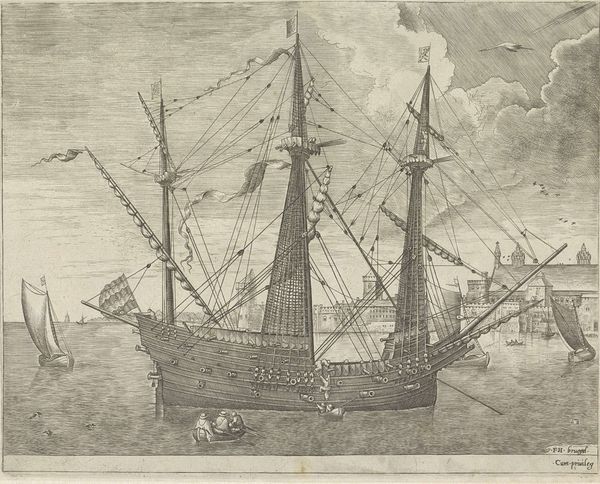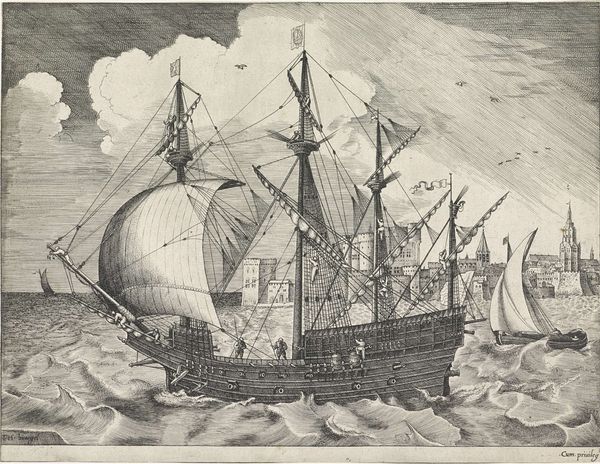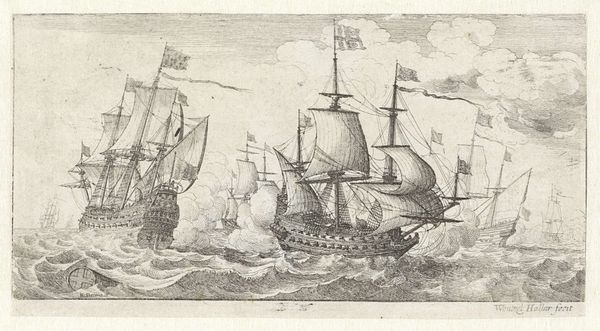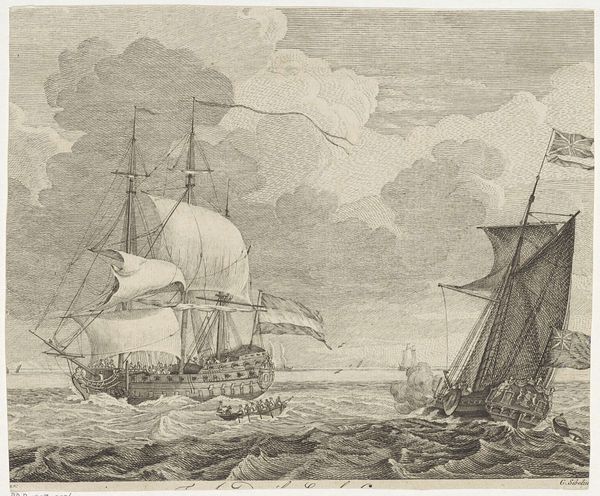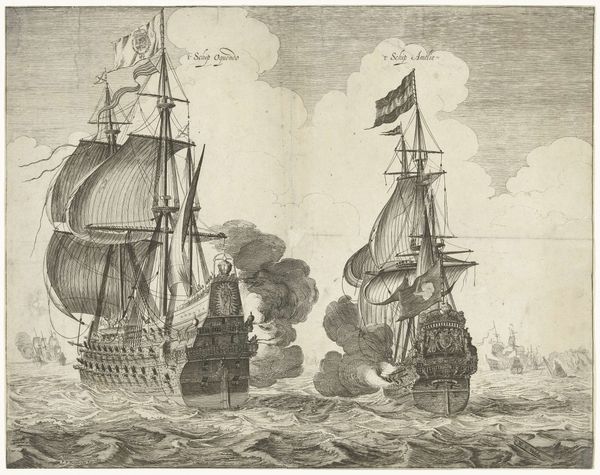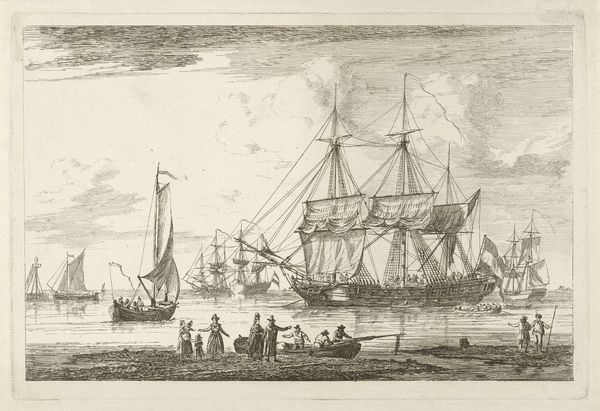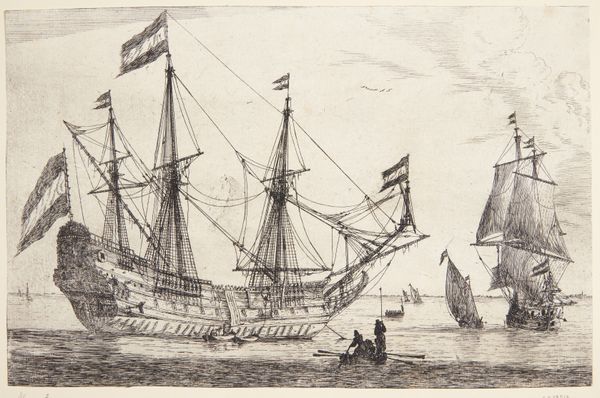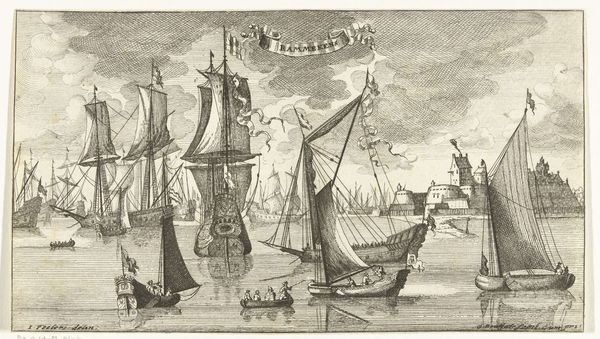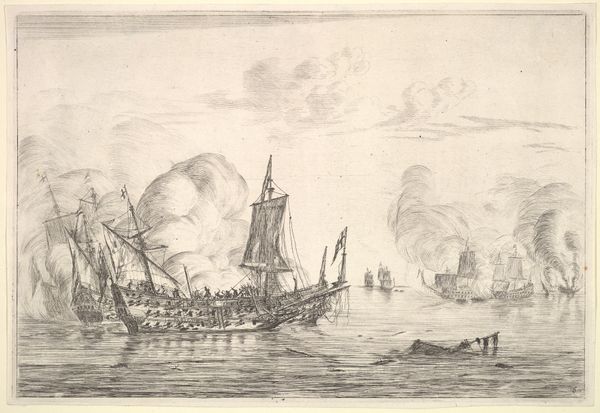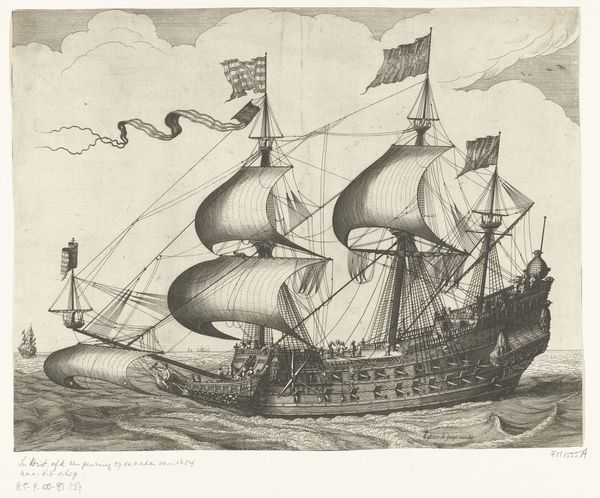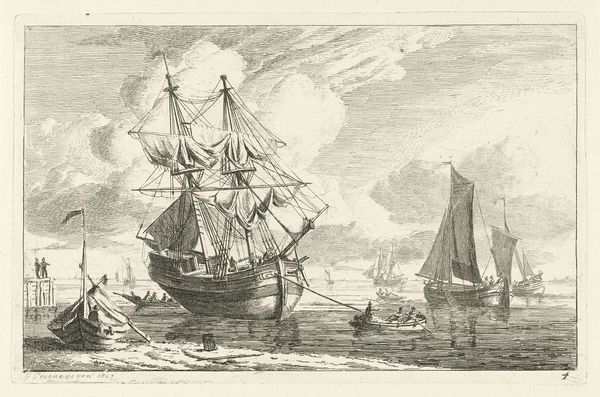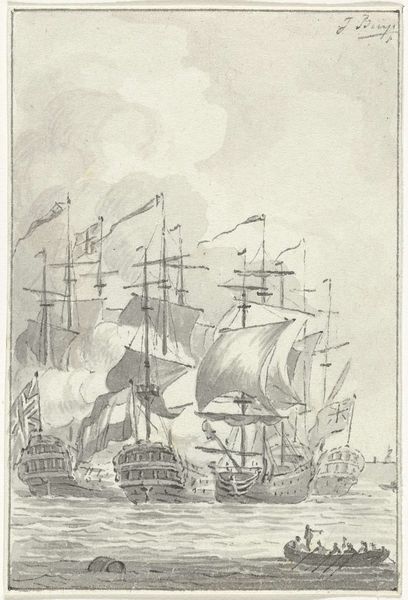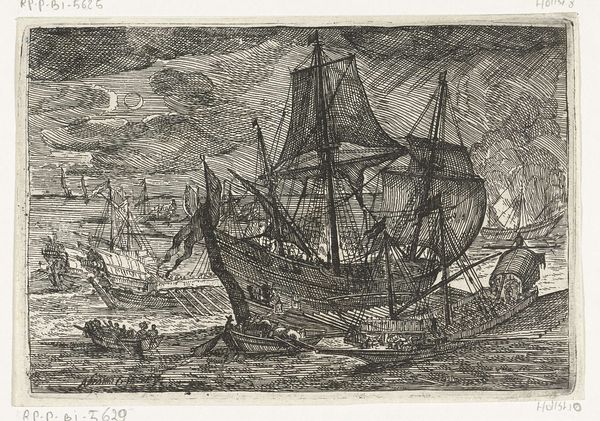
print, engraving
#
baroque
# print
#
figuration
#
line
#
cityscape
#
history-painting
#
engraving
Dimensions: height 306 mm, width 392 mm
Copyright: Rijks Museum: Open Domain
Editor: This engraving, created around 1635-1636 by an anonymous artist, depicts a ship, possibly during a battle, entering a city. It’s incredibly detailed. I am intrigued by how dynamic it is. What symbolic weight does an image like this carry? Curator: Indeed, it is dynamic. See how the artist meticulously renders smoke, figures, and architectural details. Note also the flags on both the ship and the architecture. But more striking to me is the ox atop that building on the left! Tell me, what might that ox represent to the people of the time? Editor: Perhaps prosperity or local pride, as a symbol of Ghent, given it represents a local festival and market today. Curator: Precisely! Ghent had a very strong symbolic link with the ox. In this context, I read it as civic identity boldly declaring itself at this historical moment, layered into this triumphant military scene. Look, it even appears on their modern flag! Editor: So the artwork functions on multiple levels, capturing not just a military event but a statement about the city’s identity? It’s interesting to see how different eras perceive such symbols differently! Curator: Visual symbols act as carriers, they help maintain cultural memory and continuity by being reinterpreted through the passing eras. Seeing how these historical moments are infused into everyday life and identity helps build a cultural landscape. Editor: It reframes how I look at historical prints now. I’ll definitely look for those silent, loaded details in future artworks. Thanks for helping unpack that! Curator: My pleasure, looking at these scenes, even of violence, is an examination of identity and cultural values at the time. And these continuities still show today!
Comments
No comments
Be the first to comment and join the conversation on the ultimate creative platform.
